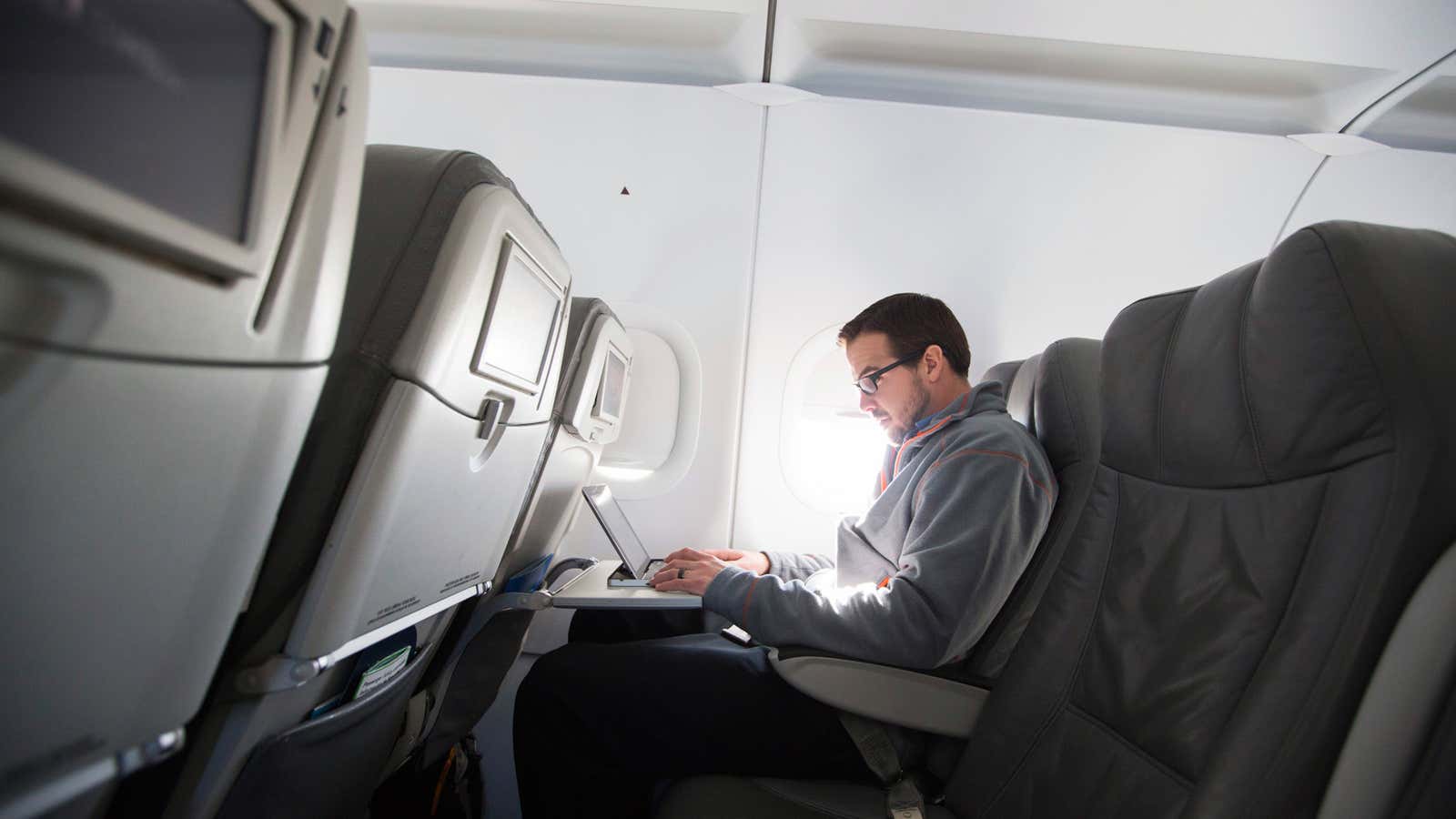Snapchat, the ethereal social messaging service, has joined the ranks of apps and sites that travelers aren’t able to access through onboard wifi while flying.
Some airlines in the US with inflight wifi are blocking access to the service. Users can send each other short photos and videos, and media organizations can create daily stories (which can involve a combination of photos, videos, and articles) that users can watch through the section of the app called Snapchat Discover. It seems that the videos are causing the app to be blocked.
Most inflight wifi services, such as Gogo—the wifi provider used by many US airlines—are very upfront about the fact that people wishing to use their services will not be able to access high-bandwidth sites and apps like Netflix, Hulu, or other video-streaming services. While other social networks like Facebook and Twitter are generally accessible in the air, they will often have their video-streaming capabilities throttled.
On recent flights on American Airlines and JetBlue, I was told by representatives for the airlines that Snapchat was unavailable to use. (Although, at least in the case of American Airlines, I was able to send one still picture snap before the service stopped working.)
It’s worth noting that this isn’t the case for all airlines, however: A representative for Southwest Airlines said that Snapchat should be available for those flying on its planes, and Delta and Alaska Air said similarly. I’ve also reached out to United Airlines, as well as Gogo, for their stances on Snapchat and will update this post as necessary. Some in-flight wifi services are slow, in any case, meaning even that if Snapchat does load, it might not be the best experience.
But hopefully, this will just be a temporary inconvenience for those with the cash and desire to Snap mid-air: Gogo is in the process of rolling out a new wifi service, called 2Ku, that Quartz’s Alice Truong recently said, “doesn’t suck.” Unlike older generations of in-air wifi, where the internet seems to chug along at speeds that haven’t been acceptable on the ground since the days of dial-up modems, Gogo’s new service averages a connection of about 10 Mbps, more than fast enough for video calls, streaming, and perhaps even the social networks du jour.
